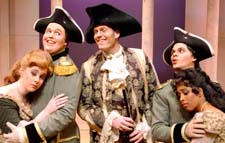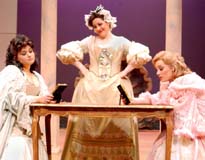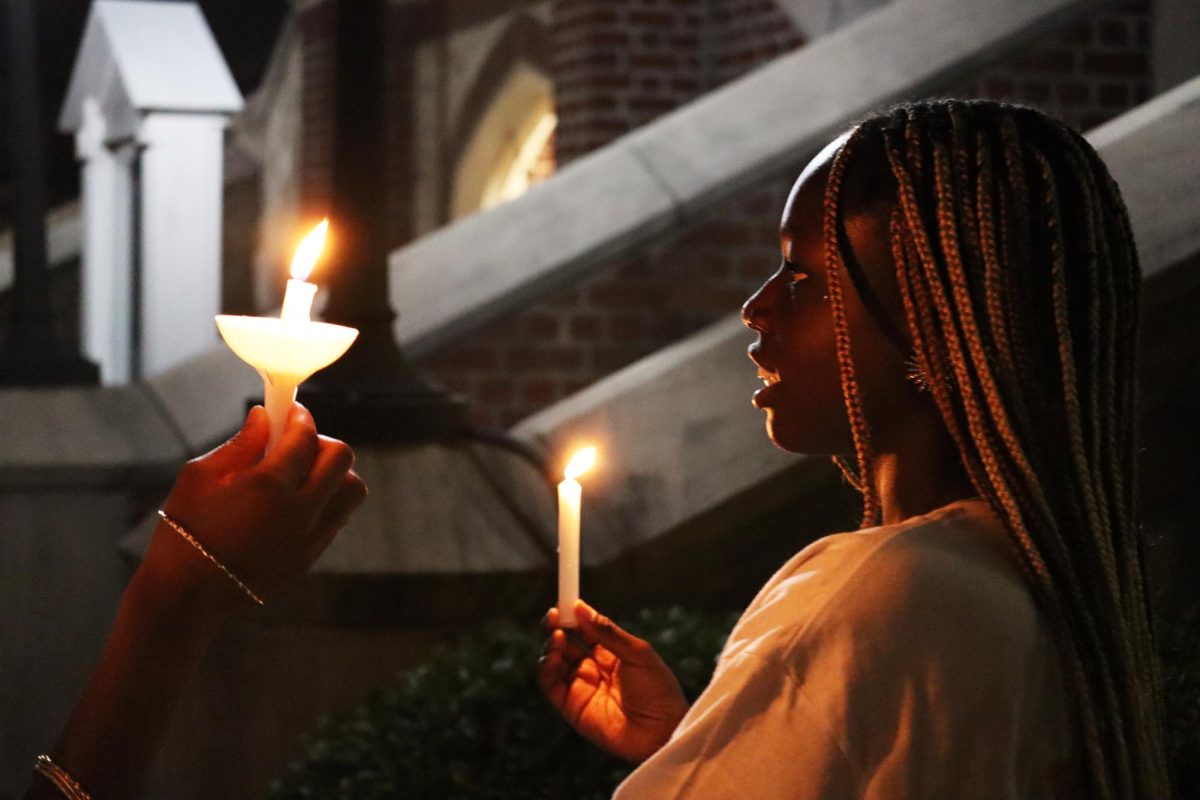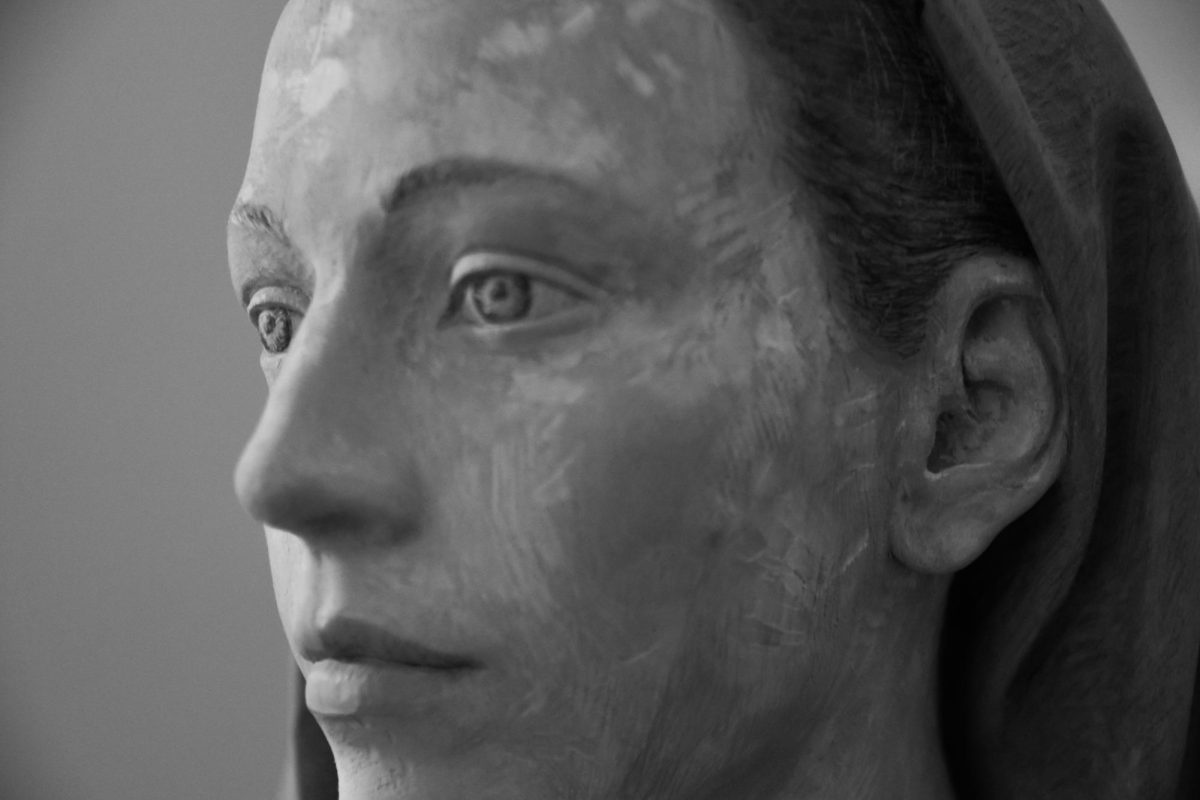Last weekend, the Loyola opera insinuated through song and dance that all women are unfaithful.
The College of Music presented its annual opera production, Mozart’s “Cosi fan tutte,” last Friday and Sunday in the Louis J. Roussel Performance Hall. This professional performance included an orchestra, dancers, chorus, staging, make-up and costumes.
The lead roles were performed by Loyola’s own vocal talent, with some roles double cast (different people played certain roles at each performance) in order to give performance opportunities to as many students as possible.
David Morelock directed the opera and Carol Rausch conducted the music.
Set in 18th century Naples, the opera opens on two young officers, Ferrando (Oscar Nieves and Terrell Perrier) and Gugliemo (Matt Woodward and Mason Joy), dining with an older friend, Don Alfonso (Francis Courtenay).
Don Alfonso declares that all women are unfaithful to men.
The two men are certain of their fiancées,’ sisters Dorabella (Lisa LaFleur and Brandy Hawkins) and Fiordilgi (Angela Marchese and Kristian Bauer), devotion and agree to a bet with Don Alfonso, who believes that even the officers’ fiancées’ affections can be swayed.
The two men tell their fiancées that they have been called to the front and then return, disguised as suitors from abroad.
Don Alfonso hires the sisters’ maid, Despina (Brianne Burgess and Angela Mannio), to help persuade the women to cheat.
The two men, disguised, each woo the other’s fiancée and watch as the women each agree to forget their fiancées and marry the strangers.
As they are signing the wedding contracts, they hear an army march and panic, thinking their fiancées have returned. The two young men reveal their true identities and the women beg to be killed.
Instead, Don Alfonso tells them that he hopes the women have learned their lesson. Everyone sings, happy to be reunited and wiser about their betrothed.
At the beginning of the opera, the women seem staunch, singing of how they cannot go on without their fiancées and firmly rejecting the suitors when they first arrive.
With Despina constantly telling them to enjoy themselves, we watch first Dorabella then Fiordiligi give in to the flirtation.
Then, Dorabella gives up the portrait of Ferrando she wears to her suitor in exchange for a golden heart. Meanwhile, Fiordiligi rejects her suitor and sings of her love for Guglielmo.
Fiordiligi decides to run away and join Guglielmo at the front. It seems that at least one woman has resisted smearing the name of women everywhere. Yet before the strains of Fiordiligi’s love song have faded, Ferrando returns and Fiordiligi gives in to him.
The story of “Cosi fan tutte” is a little unbelievable in its presentation.
We are told to believe that a mustache and some new clothing can fool your lover into thinking you are someone else, and that it would only take one day and a golden heart to convince two devoted fiancées to betray their betrothed.
But if you replace the golden heart with a new car or the promise of an inheritance, the opera becomes more credible. Also, the intentions of the opera go beyond convincing us of the improbable plot.
While the message that “all women are unfaithful creatures” may be rejected by the world and Loyola students today, there is another, more relevant message in the plot.
“If you are going to test your lover, be sure you can pass the test yourself.”
The opera is a delightful comedy and Loyola took it to the next level by making the impossible plot even more hilarious, garbing the two men in riotously colored capes, baggy pants, and turbans.
One of the best parts of the opera is when Guglielmo sings a powerful lecture to the audience on all the “lovely, lovely, (ungrateful) women” who trouble men.
Loyola’s performance of “Cosi fan tutte” was stunning in its beautiful costumes and incredible vocal talent. The opera itself is rather extended, taking what could be a relatively short plot and dragging it out with long, repetitive solos.
In addition to the length of the pieces, sometimes the words of the songs were difficult to understand, making the action hard to follow at some points.
The actors themselves were incredibly expressive with their gestures and facial expressions.
The comedic value of the performance can be attributed to the actors and their talents, who guided the performance.

Fiordiligi and Dorabella cling to their departing fiancees while Guglielmo, Ferrando and Don Alfonso conspire about their wager over the sisters’ heads. (Loyola)







